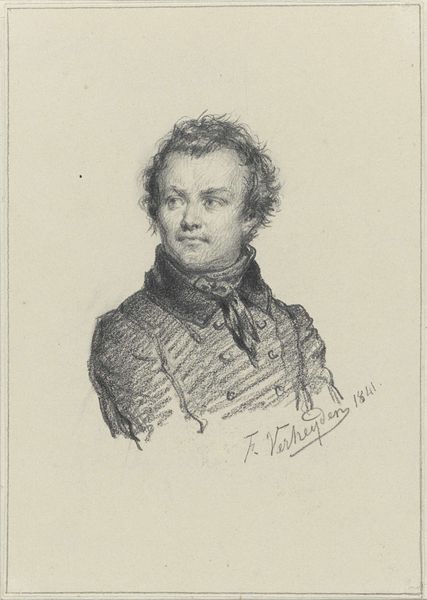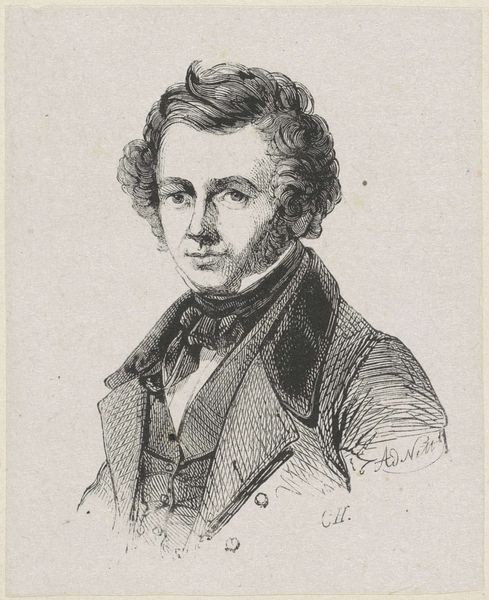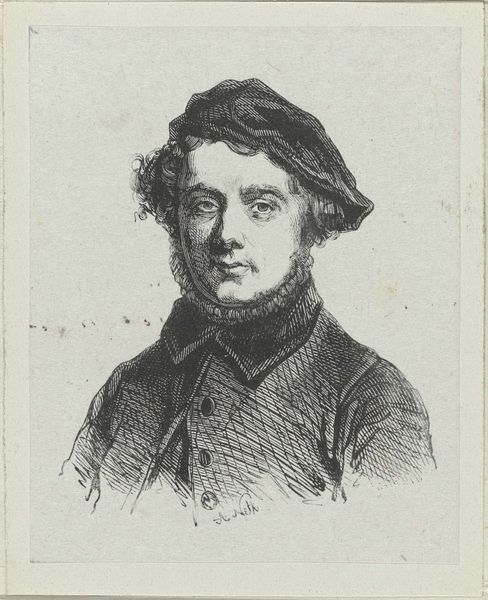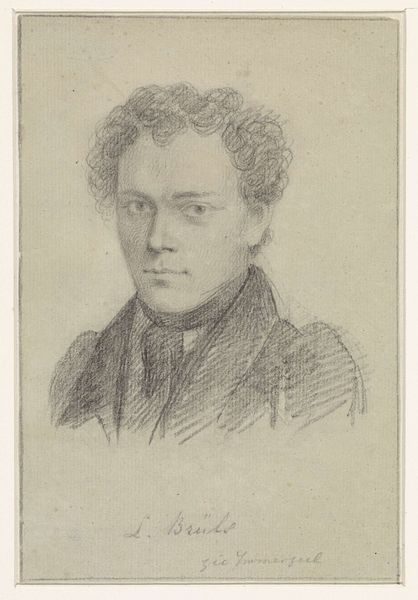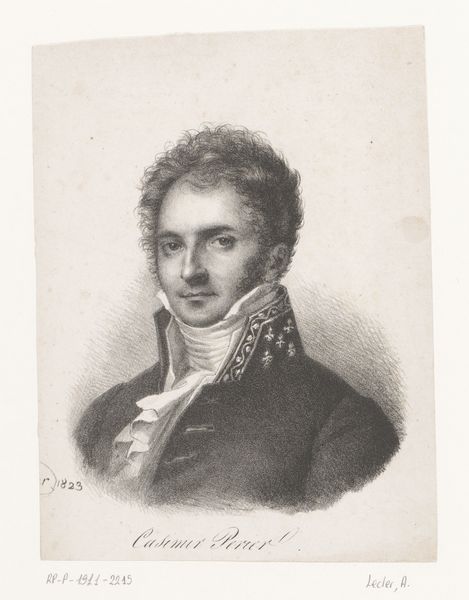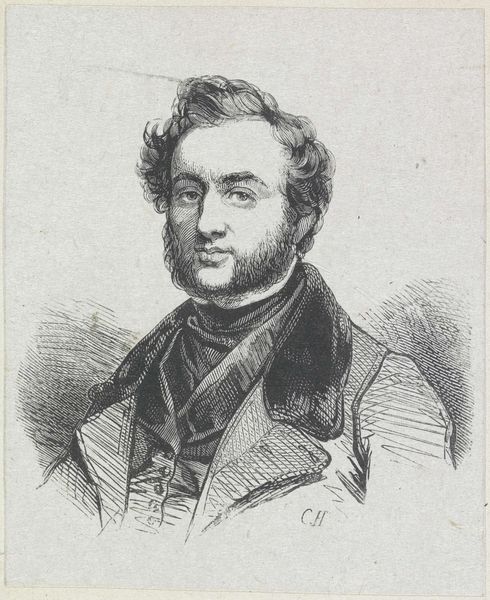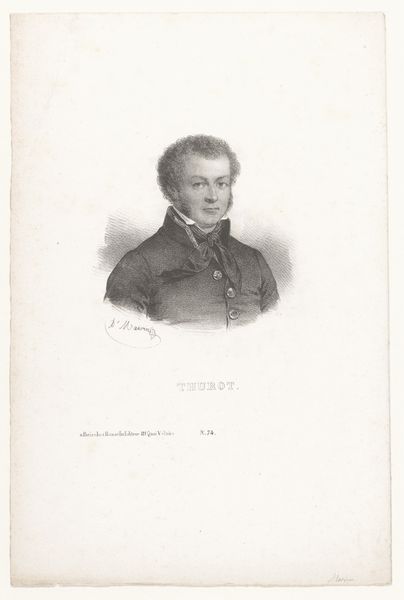
print, engraving
#
portrait
# print
#
engraving
#
realism
Dimensions: height 88 mm, width 71 mm
Copyright: Rijks Museum: Open Domain
Curator: Here we have a print, specifically an engraving, titled "Portret van de schilder François Verheyden," or "Portrait of the Painter François Verheyden," dating from approximately 1832 to 1900, held here at the Rijksmuseum. Editor: It's quite striking, even in its simplicity. The textures achieved with just line work are compelling. You immediately get a sense of a thoughtful, perhaps even melancholic character. Curator: The period witnessed a surge in artist portraits, often commissioned or created within artistic circles, serving as both documentation and promotion. Consider it part of building and broadcasting an artistic identity during that time. Editor: The engraver, though, has made very deliberate choices in line weight and density. Notice how the lines are more concentrated in the hair and the jacket, giving those areas more visual weight compared to the face. There is great play between depth and flatness, making it a rather compelling visual record. Curator: Absolutely, engravings such as these were easily reproducible. That made art and artistic figures more accessible to a wider public through journals, books and, of course, single sheet prints like this one. Editor: There’s an undeniable intimacy, heightened by the limited tonal range and tight cropping. It encourages very close observation and it is not like other portraits in the Rijksmuseum. Curator: This piece gives insight into the social fabric of the 19th-century art world and how artists consciously cultivated their image. While his technical talent is undeniable, remember its distribution was about building an artist’s reputation in the salons and galleries. Editor: So, the artistic intention is not simply portraiture, but the dissemination of self-awareness into the broader cultural dialogue. I find it quite astute to realize art both makes and portrays culture. Curator: Precisely, a mirror and a maker!
Comments
No comments
Be the first to comment and join the conversation on the ultimate creative platform.
